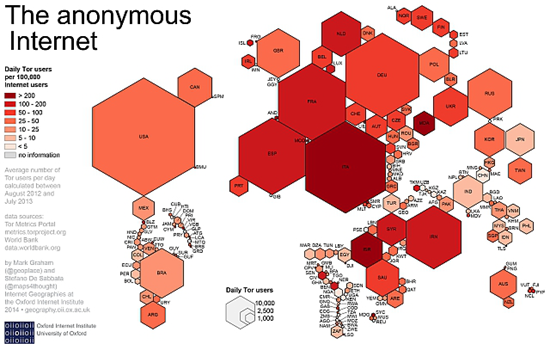
7 Ways Your Children Might Bypass Parental Control Software
By Gavin Phillips, Make Use Of, 21 April 2016.
By Gavin Phillips, Make Use Of, 21 April 2016.
During my formative schooling years, when I really should’ve have been studying, I was putting my time to much better use. The Internet was a wonderful place full of amusing videos, school-specific bulletin-boards, and endless sites filled with amazing Flash games. However, the school overlords and network administrator decided this wasn’t okay, and they reasoned we should be using our time for much more useful activities.
Like studying.
Of course, it really didn’t take long to find a workaround. Children are smart, and Google is an easily accessible resource.
Security is now tighter, and we more readily consider just what our children will be accessing on our home networks. There are out-of-box parental controls installed in most devices, as well as a plethora of third-party applications we can use to track and protect them. But just because you’ve installed a safety net, that doesn’t mean your children won’t find a way to navigate through it.
Here’s how they’ll do it!
1. Proxy Sites
The big one from my restricted Internet days, proxy sites divert traffic via an innocent address, unobstructed by any filters. This means instead of your child attempting to visit horrificfilthyNSFWcontent.com directly, they’ll head to a site such as hide.me, and simply tap the restricted address into the site search bar.
The proxy site takes care of business, routing the request to an external server which in turn retrieves the content on the user’s behalf.
Filtering software shouldn’t be able to trace the communication between the proxy site and the external server, but the proxy site itself will be listed in a filter. Many filters actually block the most popular proxy sites for exactly this reason. However, this can have other, unintended effects.
Any particularly dedicated child could eventually find a proxy site that works - they appear and disappear all the time - and while many proxy services are legitimate, your child may happen upon one that is not. A few “innocent” clicks here and there could lead to a massively irritating crapware cleanup, or worse, a full blown malware issue.
2. Changing or Brute-Forcing Passwords
An extremely common method of bypassing parental controls is by simply changing the password. I know my parents use a specific password on certain accounts, and have done since I was young. It made it easy to alter settings to my own choosing without alerting anyone to my presence. If the kids know your password, this could be a distinct possibility.
If your child is a little older, and a little more web savvy, they may have explored how to reset your password using their own in-house social engineering. Sure, a stranger doesn’t know the name of your first pet, your mother’s maiden name, and your favorite meal. But the kid’s sure do. And even if they don’t, will you notice their asking as part of a semi-elaborate social engineering scheme to change your passwords, or take it as an inquisitive mind?
Finally, and this is really unlikely, your child may brute-force your password. I cannot imagine why this would happen in day-to-day life, or where they would find access to this level of security tool. I would also hazard that if your child knows about and can make use of the powerful tools used for password cracking, you might have other info-sec issues taking place under your roof.
3. Different Wi-Fi
How well do you know your neighbors? You must know their names. Maybe their birthdays, names of pets, and a contact number for emergencies. How about their Wi-Fi password?
Okay, so this is becoming increasingly normal, especially if you are indeed friendly with your neighbors. But families living within a reasonable proximity to one another are likely to experience some Wi-Fi broadcast overlap. This means their SSID is viewable from your home. If their network security isn’t up to scratch, your child could easily log onto their unsecured network to access whatever content they desire.
It might not even be a case of lackadaisical Internet security, either. If your kids rampage in a cohort with the neighborhood kids, it could be as easy as asking one of the older children what their Wi-Fi password is. If it has been altered from an alphanumeric code to something “easy to remember,” it’ll be even easier to pass forward.
4. VPNs
It isn’t just adults escaping regional Netflix restrictions using a Virtual Private Network. Just as with proxy sites, you’ll find numerous discreet, free VPN solutions prepared to encrypt your children’s search entries and the route between their PC and the company servers.
Free solutions usually come with caveats such as speed restrictions, data logging, or a download cap, somewhat limiting the scope of achievable activities. That said, it is feasible they could switch between several VPNs installed on their system to mitigate download caps and speed restrictions. As well as this, it really is quite difficult to spot someone using a VPN with a cursory over-the-shoulder glance.
If they are using a VPN, detecting their bypassing of parental filters will be extremely difficult. Your router will not show a new, alien IP address. Your broadband provider will have no access to the content delivered. Some VPNs do log the user data, for law enforcement and marketing purposes, but they are still unlikely to share the details of your children’s VPN searches with you.
5. Portable Browsers
I always installed a different browser on my home computers. Aside from the fact Internet Explorer was largely unhelpful, other browsers were faster, more secure, and came with many more features. It also meant I had sole control over what was seen within the browser history, and I could delete it as and when I needed.
Most people know about browser InPrivate or Incognito modes, including the kids (age dependent, of course). Safe search filtering tools still catch blacklisted URLs, even when using private mode. Particularly savvy teenagers may have brushed up on their personal security homework, and be aware of the TOR Browser, which can easily be installed and deployed from a USB stick.
The TOR Browser reroutes web traffic through different international locations, consisting of more than 7,000 individual relays. This multi-layered routing makes it nearly impossible to ascertain what content a user is viewing while using the browser. Its inbuilt focus on privacy and anonymity are an excellent prospect for bypassing your filters.
6. “Accidental” Image Viewing
A slightly trivial “bypass” method, but I’m sure many children have stumbled upon this. Incognito and InPrivate mode browsing tabs still adhere to most safe search filters, dutifully blocking content and relaying the details to concerned parents. However, a user can enter their search, most likely in Google, then select the Image tab, effectively bypassing the safe search filter.
Most of the major search engine providers host and cache content on their own servers, meaning when the search is entered, there is no specific URL to filter, and numerous related images will be displayed.
7. Google Translate Proxy
This is another bypass method I would expect some children to be aware of. If a URL is blocked, they can use Google Translate as a makeshift proxy. It is as easy as setting a language you do not speak in the text input field, entering the URL you wish to access, and waiting for Google to automatically translate it.
The “translated” URL will become a link. The site will open in full, albeit within Google Translate. This can be slightly slow, but it is unlikely to be slow enough to discourage a determined mind.
What Can You Do?
It is difficult mitigating against an inquisitive mind with access to all the information the world has, at the click of a button. Simply put, if they are determined, they’ll get access to it. And if it isn’t on your home Internet, it’ll be on a friend’s, or on an unsecured network somewhere else. Younger children will likely crumble when faced with active filtering; teenagers are much more like to take up arms, and engage in battle.
And it is a battle you may well lose.
In this, education is a massive tool. Respectable and acceptable use of the Internet should form a core part of your children’s technological development. Past a certain age, there are likely other things you really should be discussing with them too. Prohibition has never solved a problem, but has certainly created plenty more, and curious mind will remain so - just without the education to go alongside it.
Device usage should also be considered. Do the children really need an all-singing, all-dancing iPhone 6 “to keep in contact with you,” or would a US$10 burner do the job just fine? Similarly, you could enforce an “Internet use in family areas only” rule, or bar tablets, laptops, and smartphones from the bedroom at night.
It doesn’t have to be an awful experience, but by taking an active, engaging, and realistic attitude toward your children’s Internet use, they’ll be far more likely to understand and respect your wishes.



No comments:
Post a Comment
Please adhere to proper blog etiquette when posting your comments. This blog owner will exercise his absolution discretion in allowing or rejecting any comments that are deemed seditious, defamatory, libelous, racist, vulgar, insulting, and other remarks that exhibit similar characteristics. If you insist on using anonymous comments, please write your name or other IDs at the end of your message.